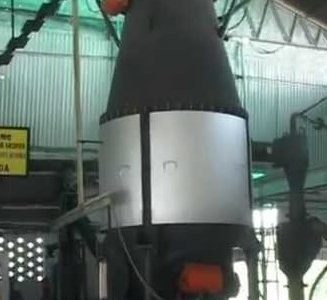Challenges with Rice Husk Gasifiers in Cambodia
Big changes in the operating environment, caused big problems for a recent program to promote gasifiers to rice mills. Here’s what went wrong and what we can learn from it.
Strong Business Case?
On paper, the Cambodian rice mill sector looked like a perfect market for the adoption of rice husk gasification technology.
A large reason Cambodian rice mills were uncompetitive against neighboring countries was that their fuel costs were very high; many rice mills do not have access to grid electricity and were forced to rely on inefficient oil generators to operate their mill.
Gasifier technology looked like an obvious solution this problem. It makes fuel-gas from a waste by-product of rice milling– rice husks – which is mixed with oil to drive a generator. A fuel combination of 70% gas to 30% oil is considered optimal, and enables the mill to make substantial saving in amount of oil it purchases.
Consequently, a development project was established to promote rice husk gasifiers to Cambodian rice mills. The scheme also guaranteed bank loans to reduce upfront costs, and further encourage adoption. The project ran 3 years from 2012 to 2015.
Unfortunately, things did not quite turn out as intended.
A Tricky Sales Proposition
In practice electricity produced from a gasifier is not exactly free, as there are some other costs.
The technology needs to be operated assiduously, to be effective, requiring a certain level of technical know-how and staffing. Gasifiers produce their own waste product that needs to be dealt with appropriately. And of course gasifier technology costs money to buy!
Moreover gasifiers are combined with other power generation sources – for fuel efficiency and for backup. Consequently, mills still need oil, generators and ideally a connection to the grid (if they have one).
So in practice selling gasifiers to Cambodian rice mills is quite challenging even in a relatively benign and uncompetitive environment of high oil prices and low grid penetration.
Unfortunately in 2012 the competitive environment got quite a lot worse.
Expansion of National Grid
Between 2012 and 2013, the grid grew by 36% and by 2014 it had expanded by a total of 59% (km network lines, EDC Annual Report 2014).
Moreover this growth was primarily around urban and densely populated areas, where most medium to large sized rice mills were found.
This brought cheaper, more reliable power to the doorstep of the mill without the need to invest time and money dealing with gasifier technology….
Preference for Cheaper (Low Quality) Technology
High quality imported systems from India can cost upwards of $150,000 compared to $40,000 to $75,000 for low quality systems. Even with access to financing to purchase the better equipment, many rice mills continued to favor the cheaper low quality equipment.
Low quality equipment burns rice husks less efficiently; generates more waste material (which is costly to dispose of correctly) and is less reliable (increasing reliance on backup power sources and requiring more maintenance)
Ultimately dissatisfaction with the results obtained from the cheaper equipment impacted the market’s view of gasifier technology in general.
Falling Oil Prices
From 2011 through to mid-2014 global oil prices averaged over $100 per barrel[1], making fuel oil expensive relative to fuel gas from a gasifier. The case for investing in a gasifier was therefore strong.
However in the 6 months to end 2015 oil prices fell by around 50%!
It’s difficult to identify how significantly this affected the gasifier program – falling global oil prices take time to filter through to the consumer.
However it is reasonable to say it didn’t help!
Implementation Delay
The project started in 2012 but roll out was delayed by 1 year due to the national elections and subsequent ministerial reorganizations.
This delay was very influential, sharpening the projects exposure to the above emerging trends – the extension of the national grid during start and the tumbling oil price at the end of the project.
In Summary
So in summary, the problems facing the program were the same general problems facing any business – competition and speed – and reflect the general challenge of planning in a dynamic environment.
- Massive expansion in supply of a ‘better’ substitute for mills’ energy needs – the national grid;
- Competition from unreliable but <50% cheaper gasifier manufacturers;
- Huge improvement in economies of oil generators, due to a 50% fall in oil prices and
- A delay between planning and execution increased possibility of material changes to the programs operating environment.
[1] Indexmundi.com, Crude Oil (petroleum) Monthly Price – US Dollars per Barrel; accessed June 20, 2016 http://www.indexmundi.com/commodities/?commodity=crude-oil&months=180

Very relevant and logical report. In india government has strong policies and investment plans for solar energy while biomass is still at the verge of avoidance, although its one of the oldest renewable energy production system but equally overlooked , probably due to mentioned reasons.
But I am optimistic and believe in slow and steady wins the race concept. we need strong policies and interest of investment to promote this technology to agrarian countries.